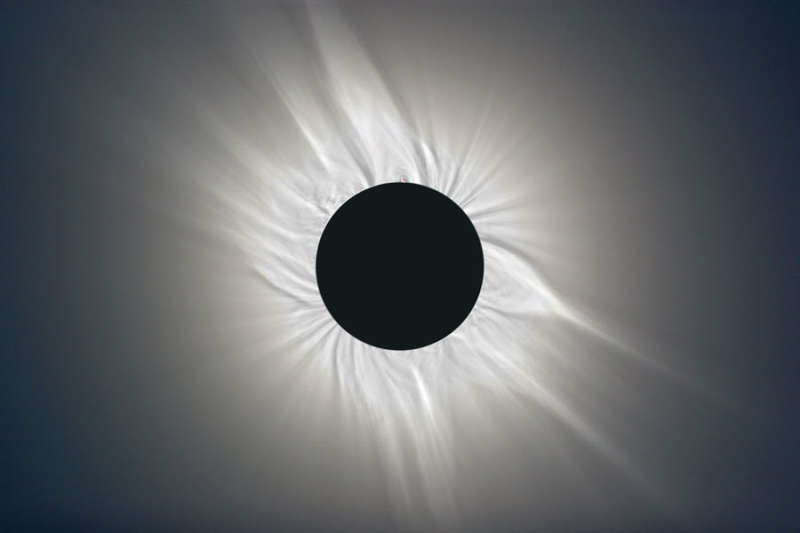
|
Credit & Copyright: Koen van Gorp
Explanation:
Most photographs don't adequately portray the magnificence of the
Sun's corona.
Seeing the
corona first-hand during a total
solar eclipse is best.
The
human eye
can adapt to see features and extent that
photographic film usually cannot.
Welcome, however, to the
digital age.
The
above picture is a combination of thirty-three photographs that
were digitally processed to highlight faint features of a total eclipse that occurred
in March of 2006.
The images of the
Sun's corona were digitally altered to enhance dim,
outlying waves and filaments.
Shadow seekers need not fret, though, since as
yet there is no way that digital image processing can
mimic the fun involved in
experiencing a total solar eclipse.
Last week, a spectacular total
solar eclipse occurred over southern Asia, while the
The next total solar eclipse will be
visible from the
South Pacific
on 2010 July 11.
Note:
An APOD editor will review great space images this Saturday night at Ft. Wilkins,
Michigan.
|
January February March April May June July August September October November December |
| ||||||||||||||||||||||||||||||||||||||||||||||||
NASA Web Site Statements, Warnings, and Disclaimers
NASA Official: Jay Norris. Specific rights apply.
A service of: LHEA at NASA / GSFC
& Michigan Tech. U.
Based on Astronomy Picture
Of the Day
Publications with keywords: Sun - total solar eclipse
Publications with words: Sun - total solar eclipse
See also:
- APOD: 2025 May 21 Á International Space Station Crosses the Sun
- APOD: 2025 March 16 Á Venus and the Triply Ultraviolet Sun
- APOD: 2024 September 2 Á A Triangular Prominence Hovers Over the Sun
- APOD: 2024 August 18 Á A Solar Prominence Eruption from SDO
- APOD: 2024 August 4 Á Gaia: Here Comes the Sun
- APOD: 2024 July 28 Á Sun Dance
- Prominences and Filaments on the Active Sun
